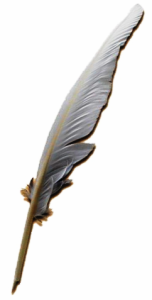 I’ve hopefully convinced you in my previous posts that you might like to write, and I may even have given you some ideas about what to write about.
I’ve hopefully convinced you in my previous posts that you might like to write, and I may even have given you some ideas about what to write about.
This is about how to actually write something.
I suppose writing is obvious, isn’t it? You just sit and stare at that blank bit of paper, or white screen, and then begin to scribble or type. Certainly, this happens sometimes – if you’re very inspired, well prepared and very lucky. But at other times, it can take more effort.
I can’t tell you precisely how to write, any more than I can tell you how to be a good doctor, but I can tell you the sorts of habits you need, and what to avoid. Plus I hope I will be able to point you towards some resources on how to write better.
The first things you need to do.
You need to read. You need to read a lot, actually. I’m told that on creative writing courses, the sort of wannabe author the teachers dread the most is the one who says “Oh, I never read – I just write”. This would be like a masterful chef who only eats pot noodle, or the composer who never listens to music. Here’s an important thing, though. Although you may enjoy the reading, it’s worth also paying attention to the craft of what you’re reading. If a newspaper article has grabbed your attention then what, aside from lurid headlines, has made that happen? If an essay or article has made you more interested in a subject you weren’t even aware existed, how did it do that?
This links to my second point, which is that you need to think about style. What I mean by this is the overall flavour of what you are writing. Consider my writing in this blog post. How would you compare it to a newspaper article, or to a erudite scientific article? Note that a style has to makes sense through a piece. For example, I started this piece in first person singular – I – and so if I suddenly became more formal – one – or became plural – we – then that would jar. Readers might not consciously notice this, but it would make the piece harder to read. It can also be used to change an emphasis – so in the right hands, and with skill it can be a helpful tool. It is a bit like a key change in music. Even if you’d struggle to formally define a key change, you do notice it when it happens.
There was a style of writing taught when I was doing science back at school which phrased things along the lines of: “The beaker was stirred in an anticlockwise direction…” and so on. I have no idea who started this, or who thought it was a good thing to teach, but it is horrible. It is hard to read, unengaging, and, in short, persuades people to put down your paper and do something more interesting. We don’t have to write like that.
One more point about style. The bit where many people go wrong is in bulleted lists. Now, I enjoy lists in long texts – they break things up nicely. But so many people don’t stick to one style through the list – they mix things up and it becomes confusing and distracting for the reader.
Next post, I’m going to include some of the things that I find wind me up.